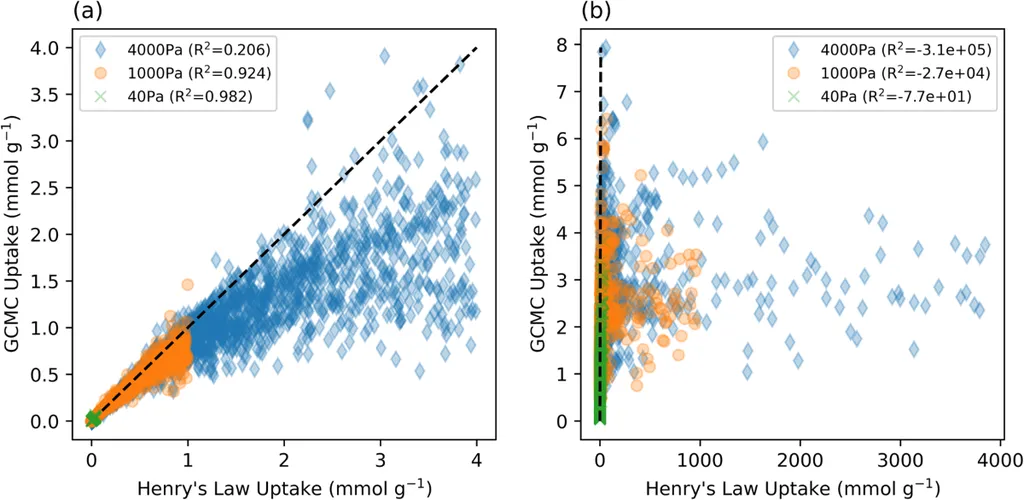Karim Aljamal and Xiao Wang, researchers at the University of California, Berkeley, have conducted a study comparing two methods for predicting methane adsorption in metal-organic frameworks (MOFs), which are materials with high surface areas and tunable properties. Their work, published in the Journal of Physical Chemistry C, aims to advance the understanding of methane capture, a critical process in natural gas storage and transportation, as well as in reducing methane emissions, a potent greenhouse gas.
Metal-organic frameworks (MOFs) are promising materials for methane capture due to their high surface area and tunable properties. Metal substitution represents a powerful strategy to enhance MOF performance, yet systematic exploration of the vast chemical space remains challenging. In this work, Aljamal and Wang compared density functional theory (DFT) and machine learning (ML) in predicting methane adsorption properties in metal-substituted variants of three high-performing MOFs: M-HKUST-1, M-ATC, and M-ZIF-8 (M = Cu, Zn). DFT calculations revealed significant differences in methane binding energies between Cu and Zn variants of all three MOFs. This suggests that the type of metal in the MOF structure can substantially influence methane adsorption, which is crucial for designing and optimizing MOFs for methane capture applications.
On the other hand, the researchers fine-tuned a pretrained multimodal ML model, PMTransformer, on a curated subset of hypothetical MOF (hMOF) structures to predict macroscopic adsorption properties. While the fine-tuned heat of adsorption model and uptake model qualitatively predicted adsorption properties for the original unaltered MOFs, they failed to distinguish between metal variants despite their different binding energetics identified by DFT. This limitation was traced to the hMOF training data, which was generated using Grand Canonical Monte Carlo (GCMC) simulations based on classical force fields (UFF/TraPPE). These force fields do not account for the electronic effects at open metal sites, which significantly impact adsorption behaviors.
The study highlights a key challenge in ML-based MOF screening: ML models inherit the limitations of their training data, particularly when electronic effects at open metal sites significantly impact adsorption behaviors. The findings emphasize the need for improved force fields or hybrid GCMC/DFT datasets to incorporate both geometric and electronic factors for accurate prediction of adsorption properties in metal-substituted MOFs. This research underscores the importance of integrating advanced computational methods to enhance the design and optimization of MOFs for methane capture and other energy-related applications.
For the energy industry, the practical applications of this research include the development of more efficient and selective materials for methane storage and transportation, as well as for reducing methane emissions from various sources. By understanding and leveraging the role of metal substitution in MOFs, researchers can design materials tailored to specific applications, ultimately contributing to more sustainable and efficient energy systems.
This article is based on research available at arXiv.

